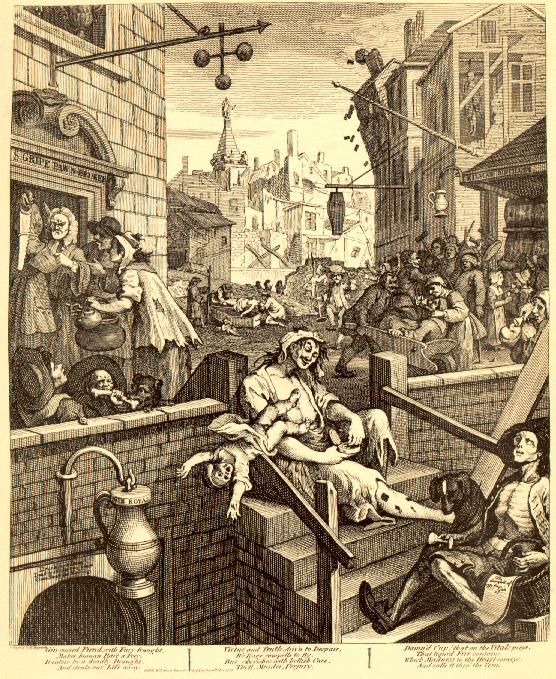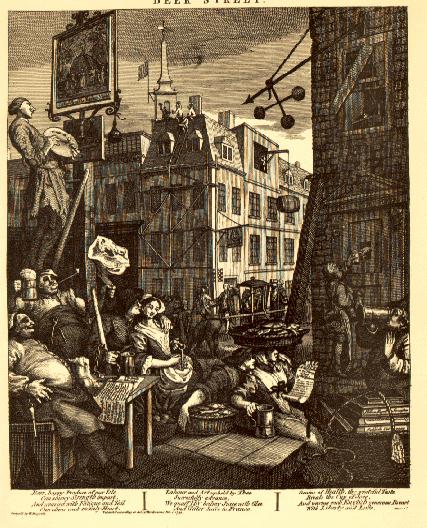Opposing Views of the City
Just as the author John Gay was extremely successful in engaging many of his reader's senses in his poem Trivia in order to expose to them the potential harmful effects of the city, William Hogarth was able to do the same for the viewers of his art through the sense of sight.
Hogarth often used the city as the focus of his work. Often these pieces "viewed together... recreated spaces... of the modern urban experience, highlighting its moral ambiguity, potential for evil, and love of public spectacle-themes." 1 By allowing the viewer to see for himself the possible consequences of some actions, the works attempted to persuade the audience's opinions much like Trivia and Pilgrim's Progress did in the world of literature.
Two such works were Gin Lane and Beer Street which focused specifically on the evil of drinking gin.
Gin Lane and Beer Street

Gin Lane by William Hogarth (1751)
This print, associated alcoholism with the drinking of gin. As one can notice from the engraving, this form of drink could lead to death and the fall of the city both morally and physically, while those in the business of selling gin were prospering. 2

Beer Street by William Hogarth ( 1751)
On the other hand, the drinking of beer, in moderation, was associated with the prosperity of the city, and the fall of the pawnbroker. 3
These prints also point to Hogarth's hate-love with the emergence of city life: willing to accept one "evil" and pushing away the other.